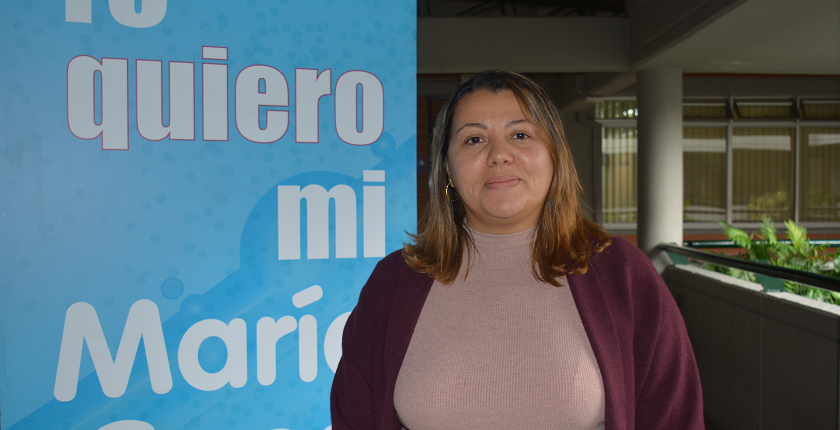Blog
New articles talk about the quality of our research
- 23 enero, 2020

The Maria Cano teachers stand out for their participation in recognized international journals where the quality of the research work is exalted, in the search for community well-being. Our Institution presents a relation of the most recent articles that allow to socialize the result of the work in the research groups that in the last years have achieved the growth and consolidation of the investigation; in this case, the Fisioter Group, assigned to the Physiotherapy program.
ARTICLE: Body posture and biomechanics in women after mastectomy
AUTHORS: Catalina Lopera Muñeton, Osiris Mayde Bedoya Bedoya, Fanny Valencia Legarda, Camilo Andres Páramo Velásquez y David Correa Castaño.
ACADEMIC JOURNAL: Journal of Physics: Conference Series
CATEGORY: Q3
ABSTRACT: About 14 million new cases and 8 million deaths from cancer are expected each year in the world. In Colombia, a total of 145,020 cases of different types of cancer are registered by July 2018 and an estimated 165,366 cases of five-year survivors (INC, 2018). This invites us to place special emphasis on this population and to generate initiatives that allow us to evaluate their physical alterations properly in order to develop effective techniques that improve the quality of life of the survivors.
Breast cancer is the most frequent cancer in women and leads to structural alterations due to the cancer itself and its treatments, which can generate a direct or indirect impact on posture such as fatigue, muscle and nerve alterations such as paresthesia, weakness and pain, weight changes, fibrosis, poor healing among others. In addition, it is estimated that survivors suffer from secondary shoulder dysfunction, resulting from the biomechanical alteration of muscles that have been manipulated during the surgical procedure, as well as position and movements made during and after procedures, with the consequent limitation in basic daily activities and life.
Taking into account the clinical and functional complications documented in the literature review and the greater access to treatments that make it possible to increase the number of breast cancer survivors, the current research arises to describe the effect of the external prosthesis on the posture and body biomechanics of women mastectomized by breast cancer, through the application of cineantropometric tests consisting of the assessment and capture of 3D movement for the analysis of posture, balance, arch support, gait and grip strength in the upper limb. Studies such as the current research are necessary, which generate an alternative for patients to know the benefits and risks of using external prosthesis, and if these contribute or not to the improvement of the postural mechanics.
Read the article here
ARTICLE: System for supporting and fixing body segment for Nukawa lower limb rehabilitation device.
AUTHORS: Fanny Valencia Legarda, Camilo Andrés Páramo Velásquez, Vera Pérez Ariza, Manuel José Betancur Betancur.
ACADEMIC JOURNAL: Journal of Physics: Conference Series
CATEGORY: Q3
ABSTRACT: The main objective of this study was the design of a support and fixation system for the developing lower limb rehabilitation system, Nukawa (Exoskeletal lower limb rehabilitation system controlled by robotics, surface electromyography and electrical stimulation), makes emphasis on lumbar support, hand support and fixation mode, grip and suspension, in order to generate ideal ergonomic conditions for the system to be used by average population.
In view of the above, a design proposal was developed to link the exoskeleton, a modular orthosis-type system, based on the study of body shapes and segments (kineantropometry) to facilitate better adaptation and positioning of the user in the Nukawa, also seeking to ensure that the execution and performance of the exercises could be carried out in a comfortable and safe manner. The design requirements of the Nukawa, the criteria for use by clinical personnel, the specifications for additive manufacturing and analysis through finite element software were considered for the preparation of the pieces and the verification of their operation. Finally, the construction of a system of supports and fixings based on the ergonomic requirements and anthropometric specifications of a typical subject (weighing 75 kg and a height of 1.75 cm) was achieved through virtual 3D models.
Read the article here
ARTICLE: The Development of Scientific Growth in Latin America and the Caribbean. An Economic and Social Approach
AUTHORS: Fanny Valencia Legarda, Juan David Hernández Upeguí (Egresado programa de fisioterapia)
ACADEMIC JORNAL: World Journal of Social Sciences and Humanities
CATEGORY: Open Access
ABSTRACT: In the countries of Latin America and the Caribbean, the research and development processes have been determining factors in productivity, innovation and economic growth, as they have contributed not only to a competitive and equal society, but also to higher levels of well-being, which can help to solve problems by enriching scientific knowledge when they are included. Economic growth models based on Research, Development and Innovation (RDI) had the following objectives: long-term sustainability, stimulation of the creation of new discoveries that have been added to the improvement of the quality of life, and production policies for the development of territories. This literature review led to the designation of researchers as agents generating scientific capital, recognizing them as means of growth and impact on today’s society. However, there is no coherence between the materialization of projects and the coverage of current needs in Latin America and the Caribbean, among some governmental agents together with the lack of prioritization in relation to the current problems of some developing countries.
Read the article here
